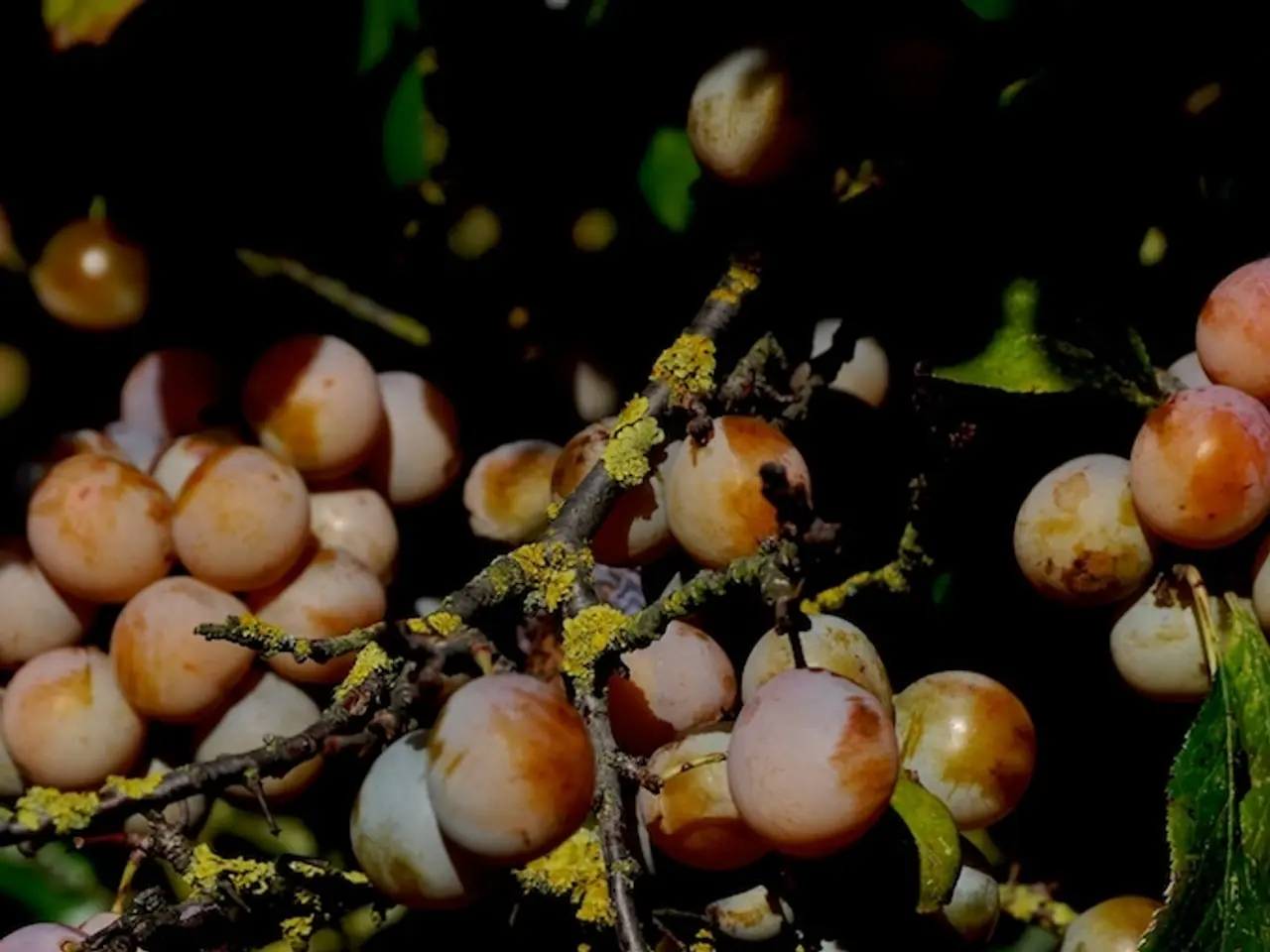Tips for a successful fruit crop yield
Tucking a fruit orchard into your backyard or even a tiny balcony is entirely possible with the right approach. Here's a lowdown on how to grow mouthwatering fruits in small spaces:
Growing Fruits Vertically
Optimize your growing area with these clever techniques:
Train and Prune to Save Space
- Espalier and Cordons: Turn your walls, fences, or trellises into productive fruiting zones! Train fruit trees using espalier techniques to grow flat, or form them into cordons. Choose dwarf apple, pear, or peach varieties for flexibility and high yields.
- Trellising: When it comes to small fruits like strawberries or vining fruits, trellises, vertical towers, or hanging baskets can work wonders on balconies and patios, freeing up ground space.
Container Gardening for Small Spaces
- Drainage Direction: Ensure your growing containers have good drainage holes to stave off root rot.
- Quality Mix Matters: Use high-quality potting mixes designed for retaining moisture while allowing drainage - crucial for container success.
- Sunlight Positioning: Since sunlight is crucial for fruit production, be sure to position containers in a sunny spot with at least 6 hours of direct sunlight daily.
Fruit Gardening in Small Spaces - Care and Maintenance
Keep your fruit plants healthy and robust with these practices:
Pruning for Control
- Regularly prune your fruit trees, cordon-trained, or espalier-style, to maintain their shape, and encourage fruit bud development.
- Remove dead, diseased, or crossing branches for optimal airflow and reduced disease risks.
Mulch Magic
- Apply a 2-4 inch layer of organic mulch (wood chips, straw, or compost) around the base of your fruit plants. Mulching helps conserve soil moisture, suppress weeds, and regulates soil temperature.
- Keep the mulch away from the trunk to prevent rot.
Water With Care
Container plants need more frequent watering than in-ground variations:
- Check soil moisture regularly and water thoroughly when the top inch feels dry.
- In-ground plants also benefit from regular watering, especially during the flowering and fruit-development stages.
Pest and Disease Protection
- Maintain good hygiene by cleaning up fallen leaves and fruits to combat pest and disease pressure.
- Use barriers like netting or row covers to safeguard your fruit from birds and insects.
- Encourage beneficial insects and choose organic or mechanical pest controls as needed.
- Ensure proper air circulation through judicious pruning and spacing to deter fungal diseases.
Harvesting and Enjoyment
- Pick fruits when they're fully ripe (marked by color change, ease of detachment, and taste).
- Regular picking encourages continued fruit production in small fruiting crops.
- Handle fruits gently to avoid bruising, especially when harvesting containers or trained trees that may have more delicate branches.
By combining vertical growing methods, container gardening, and careful attention to care practices like pruning, mulching, and watering, you can cultivate a fruit garden that thrives in even the most modest spaces. Protect your plants from pests and diseases with ease using cultural practices and physical barriers, ensuring a plentiful and healthy harvest.
In a small backyard or even a tiny balcony, implement vertical growing techniques such as espalier and cordons on walls or trellises to save space for home-and-garden species like dwarf apple, pear, or peach trees. For small fruits like strawberries or vining varieties, consider container gardening with well-draining grow containers placed in a sunny spot with at least 6 hours of direct sunlight daily. In both cases, follow practices like regular pruning, mulching, and careful watering to ensure a productive home-and-garden lifestyle.








